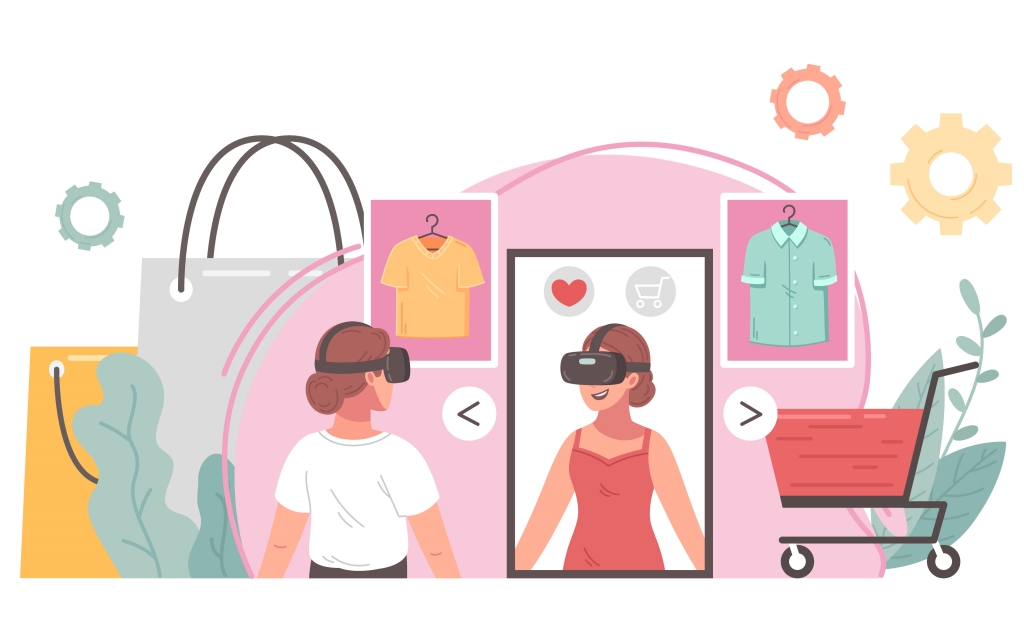XIMIVOGUE Tips for AR in Retail
Author: Celia| Keywords chosen by Celia
Imagine walking into a store and immediately being presented with a personalized product list, being able to virtually try on clothes, or being guided through the store as you check off your shopping list.
The digital revolution brought about by AR technology has disrupted the traditional way we perceive and interact with the real world. Retail is no exception.
Using AR technology, retailers can create more immersive and interactive shopping experiences tailored to customers' needs and preferences.
In this article, we dive headfirst into the world of augmented reality in retail, exploring its uses, benefits, prospects, and more.

What is AR in retail?
Augmented reality (AR) is a new technology that brings images, videos, and 3D models to life.
AR in retail is the integration of this technology into the retail shopping experience, from in-store to online experiences.
1. Virtual try-on experience
AR allows consumers to apply digital clothing, images, and accessories directly to their bodies in real time.
By overlaying a virtual representation in a real-world environment, customers can see how products look and fit before purchasing. This reduces the need for physical try-ons and increases the convenience of online shopping.
It offers customers a new way to shop, reducing returns and increasing conversions. Additionally, it allows for an easier and more effective fitting process without the need for staff assistance, providing practical and time-saving benefits to both retailers and their target audience.

2. Virtual navigation
In supermarkets and department stores, without guidance, it is very difficult to find the right product in a huge store.
Try out the AR navigation in retail stores. Virtual navigation is still a relatively new concept that customers can use to simplify their shopping experience.
The goal is to guide shoppers through the brick-and-mortar retail environment and provide additional information about the physical product. This use of AR in retail can be combined with other digital features such as geofencing and notifications to help entice customers to visit your store with valuable offers.

3. In-store displays
It's important to motivate customers to make a purchase as soon as they enter your store.
By installing in-store displays with AR capabilities, shoppers can browse product catalogs, customize items, and find products that match their style and skin tone. Most importantly, it solves a long-standing problem with most out-of-home campaigns: the inability to measure effectiveness.
In addition to offering customers exciting new ways to interact with ads, these AR in-store displays can also track and collect analytical data in real-time.

4. Product and space visualization
In the past, purchasing large, complex items that depended on personal preferences was a time-consuming process that required customers to physically visit a retail store or showroom.
However, retail companies have recognized the need to simplify the shopping experience and have started implementing AR features that allow customers to visualize and project different products and spaces.
AR technology allows customers to see how products will look in their living spaces, providing a whole new level of personalization and convenience. For example, a furniture retailer can use AR to place virtual furniture in a customer's home and see how it fits and complements the existing décor. This improves decision-making and reduces the risk of buyer's remorse.


 Blasting into Fun with The Magic of Sound and Light Toy Guns
Blasting into Fun with The Magic of Sound and Light Toy Guns
 Top Off Your Style Game with XIMIVOGUE Trendy Baseball Cap Series
Top Off Your Style Game with XIMIVOGUE Trendy Baseball Cap Series
 6 Christmas Pairs You will Keep Wearing Long After the Tree Comes Down
6 Christmas Pairs You will Keep Wearing Long After the Tree Comes Down
 Deck the Halls with XIMIVOGUE Merry Christmas Magic in 2025
Deck the Halls with XIMIVOGUE Merry Christmas Magic in 2025
 Meet the Charming Mr. Pa Pandas from XIMIVOGUE
Meet the Charming Mr. Pa Pandas from XIMIVOGUE




